Huge profits in subprime caused specialized dealers/lenders to take big risks, which came home to roost. But prime auto loans are in pristine shape.
By Wolf Richter for WOLF STREET.
Subprime doesn’t mean “low income,” it means “bad credit”; it means a history of taking on too much debt and not paying those debts and other obligations as agreed, which caused their FICO score to drop into the subprime category.
And subprime auto loans are getting into trouble, after the free-money era got them temporarily out of trouble. In April, 5.23% of subprime auto loans were 60 days or more delinquent, the worst April on record, and a hair above the prior record of April 2020, according to the Fitch subprime index, which tracks auto loans that have been securitized into the asset-backed securities (ABS) that are rated by Fitch.
The index is seasonal, with highs every January or February and lows in April or May, as tax-refund season bails out many a borrower. February 2024 had been the highest of any month on record with a delinquency rate of 6.4% (red). But prime auto loans are in pristine conditions (blue).
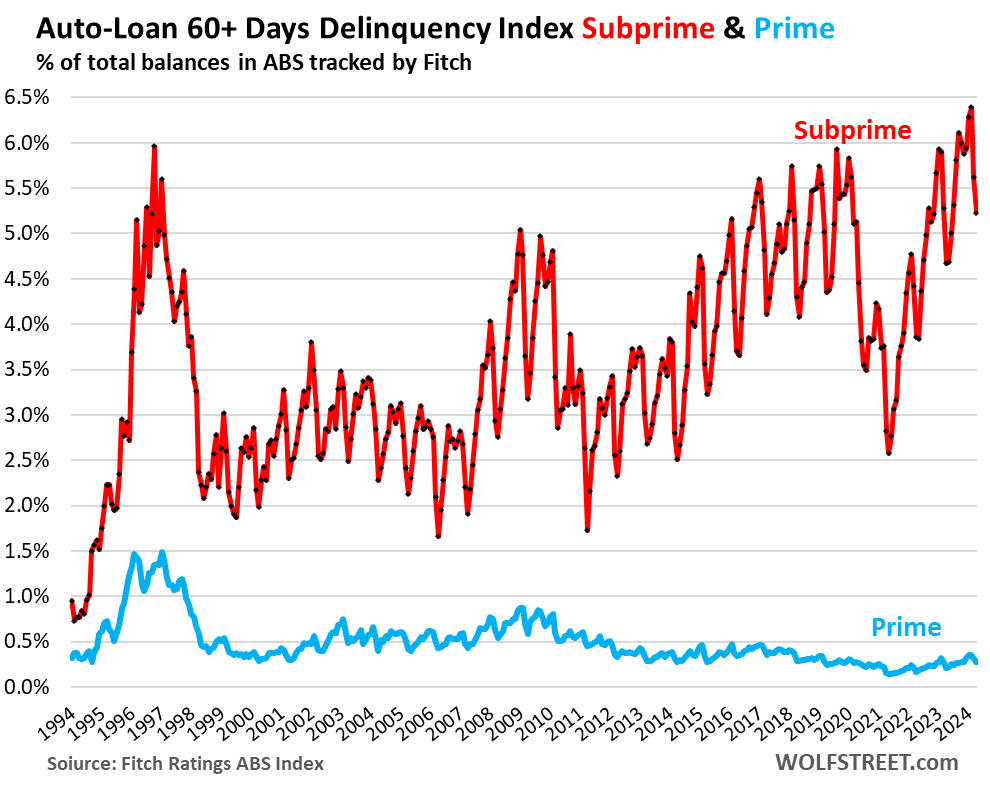
The Aprils of every year going back to 2006.
Subprime delinquencies were already rising from 2015 through 2019, as subprime lending was getting very aggressive, leading to a slew of scandals, big losses, and the collapse of some PE-firm-owned specialized subprime dealer/lenders in 2018, some of which we discussed at the time, so we’re kind of used to the subprime drama and take it in stride.
The thing is, subprime is a business with huge profit margin on selling the cars, and huge profits on financing the cars at dizzying interest rates, and so specialized companies take big risks to get to those profits, and for some, it ends in a collapse when the risks come home to roost.
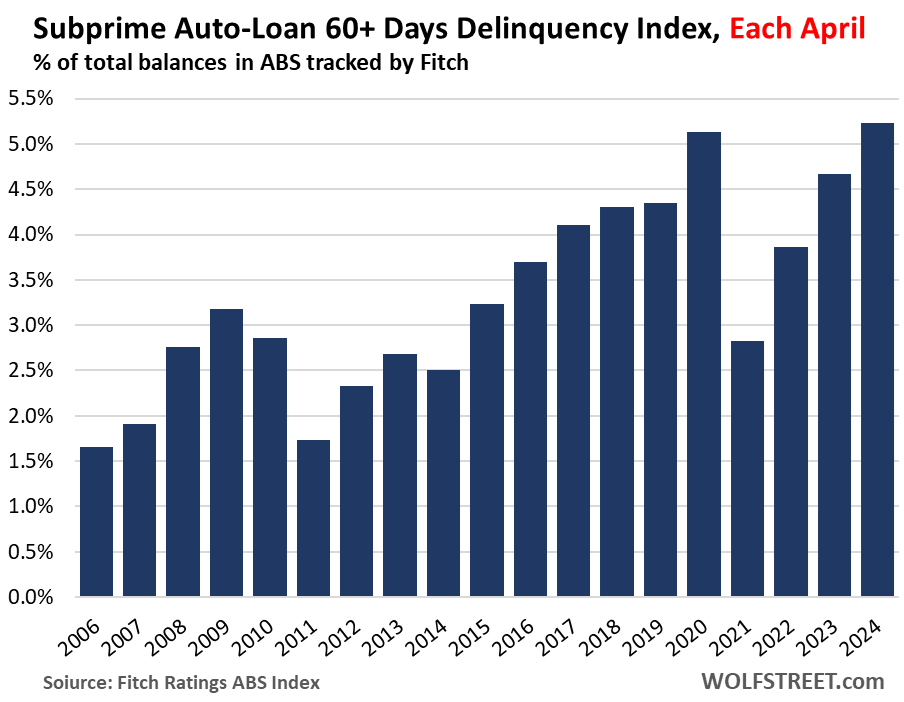
Subprime is only a small part of used vehicles, doesn’t impact new vehicles.
With auto loans, nearly all subprime lending is for used vehicles, and most of it is for older used vehicles. The sweet spot is around 10 years old. It’s very difficult to finance a new vehicle with a subprime credit score.
About 61% of used vehicle buyers pay cash, according to Experian. For the 39% who borrow to buy a vehicle, the share of subprime borrowers was about 14% of loan originations. This means that about 5.5% of all used vehicle buyers (those that pay cash and those that finance) get subprime loans. It’s just a small specialized high-risk high-profit corner of the overall used vehicle market.
The subprime share used to be higher before the pandemic, a sign that subprime lending has tightened in 2023, as it always does when delinquencies pile up.
Prices and the mess.
But used vehicle prices spiked by about 55% in 2020 through 2021, and people took out big loans to finance these massively overpriced used vehicles. Since early 2022, used-vehicle prices have given up nearly half that spike, but they’re still very high, and interest rates have shot up. These movements have turned the used-car business upside down.
A few PE-firm owned specialized subprime dealers/lender chains collapsed in 2023, and the largest publicly traded subprime dealer/lender Car-Mart disclosed big problems, and its stock tanked nearly 50% since mid-August, despite the booming stock market.
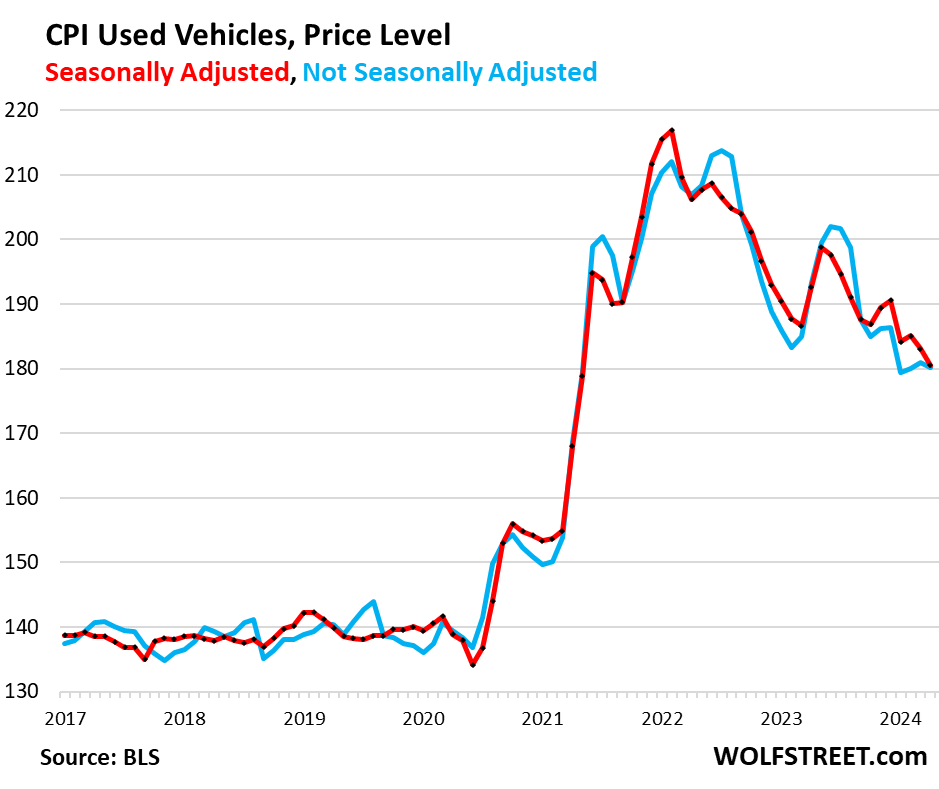
Losses for investors have been less severe.
The subprime business hinges on the dealer/lender being able to securitize the subprime auto loans into Asset Backed Securities (ABS) and sell the investment-grade tranches of those ABS to pension funds and other yield-seeking institutional investors, and sell the riskier junk-rated tranches that take the first losses to investors seeking higher yields.
Fitch’s Auto-Loan Annualized Net Loss Index for subprime loans has come up from the free-money lows but has not reached new highs, and has remained in the prepandemic range, which is kind of surprising, and led Fitch to speculate that there was a rotation of delinquencies, where delinquent borrowers, when they got closer to losing the vehicle, resumed payments at the expense of some other debt, such as credit cards, rotating between them.
They’re in essence juggling their delinquencies to stay in a position where they can keep their cars, which has helped keep the losses in the normal range.
Investors earn high yields on the riskier lower-rated portions of the ABS that take the first losses, and those yields compensate investors for taking those credit risks, though it may not always work out.
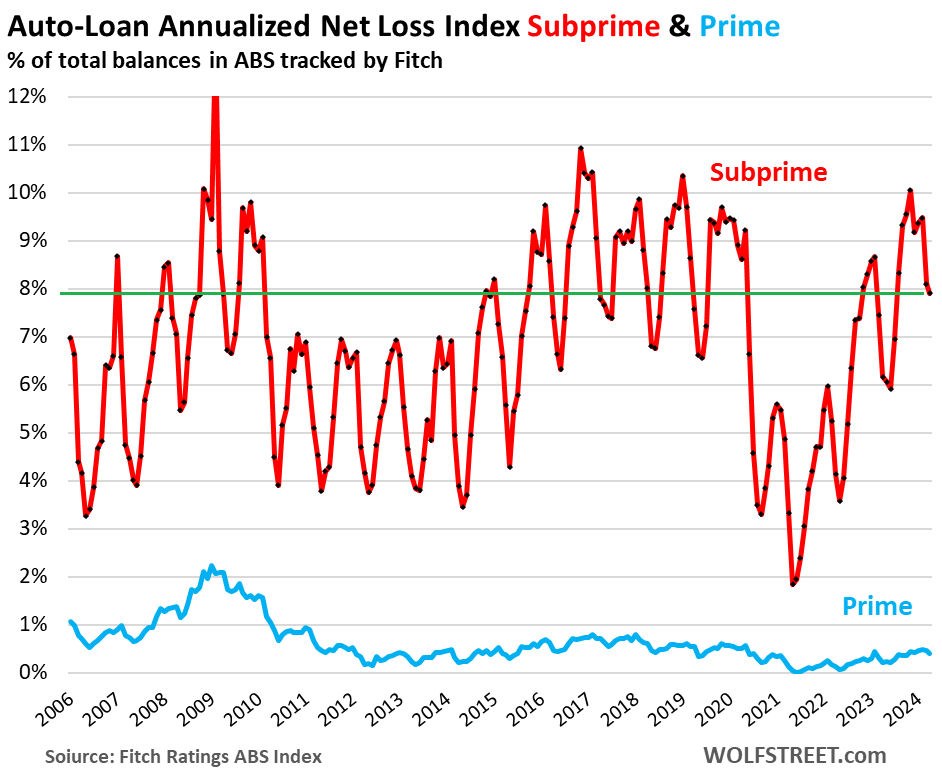
This subprime mess powered the overall delinquencies.
According to the New York Fed Household Debt and Credit Report this week, the 30-day-plus delinquency rate for all auto loans – so 30 days, not 60 days as the Fitch index – rose to 7.9% in Q1, the highest since 2010, and about half a percentage point higher than in 2017. Many of the borrowers who are 30 days behind eventually start making payments again and don’t reach the 60-day stage that Fitch tracks:
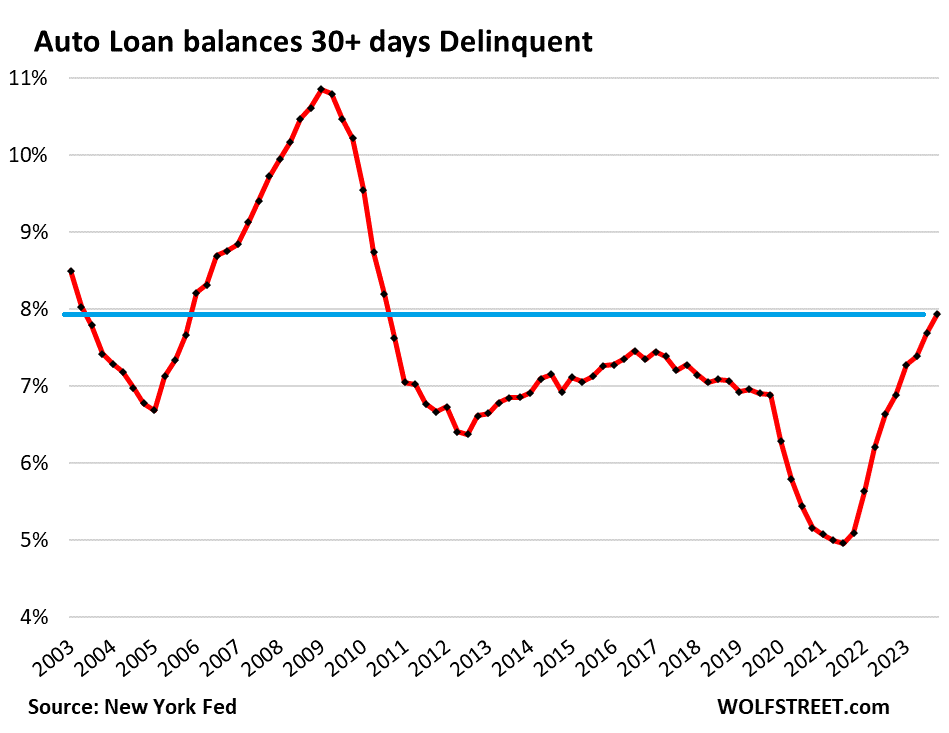
The auto-debt burden is high, due to high vehicle prices.
Surging vehicle prices have caused vehicle debt to surge, and the debt levels have roughly kept up with rising disposable income over the past few years, and ratio remains high.
Note that about 80% of new vehicle purchases and only about 41% of used vehicle purchases are financed, so for people who do finance, the burden can be substantial.
Where the problem arises – as we have seen above – is in the subprime segment where cars are sold with huge profit margins, and therefore at very high prices, and massive payments in relationship to what customers are getting.
Disposable income is income from all sources except capital gains, minus taxes and social insurance payments. This is the income that consumers have left to spend on car payments and all their other stuff:
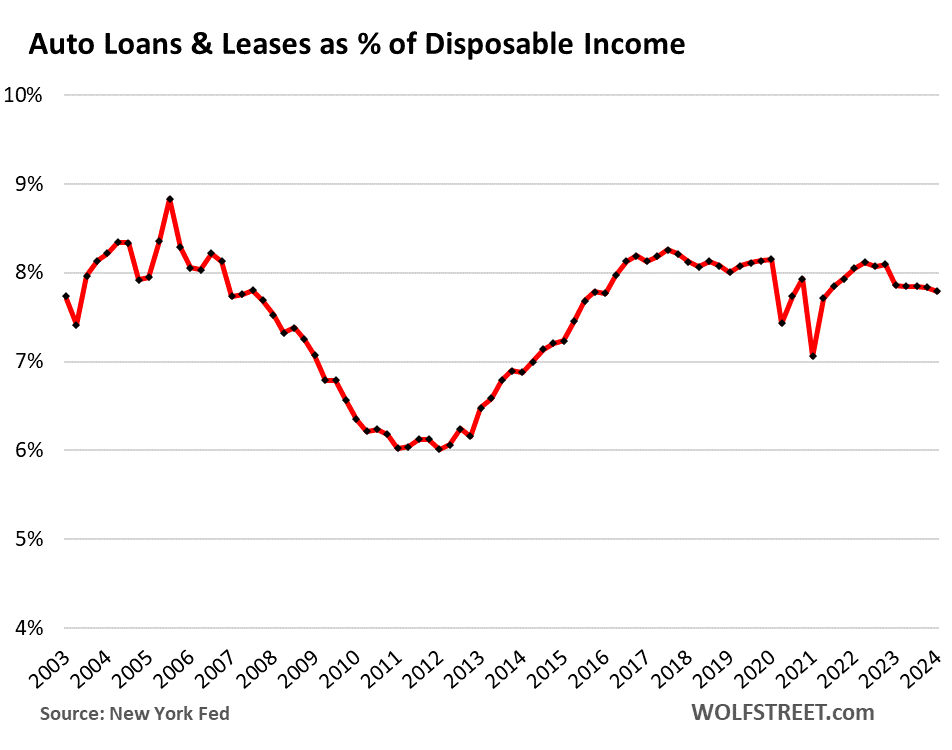
This concludes our series on Q1 consumer credit.
Earlier this week, we discussed credit cards, mortgages and HELOCs, and the overall credit situation of our not so Drunken Sailors:
Here Come the HELOCs in Household Debt: Mortgages, Delinquencies, and Foreclosures
Enjoy reading WOLF STREET and want to support it? You can donate. I appreciate it immensely. Click on the beer and iced-tea mug to find out how:
Would you like to be notified via email when WOLF STREET publishes a new article? Sign up here.
![]()
"auto" - Google News
May 19, 2024 at 08:58AM
https://ift.tt/Tj4E9ra
Subprime Auto Loans Are Getting Messy - WOLF STREET
"auto" - Google News
https://ift.tt/cz1H79R
https://ift.tt/A9VK75G
Bagikan Berita Ini















0 Response to "Subprime Auto Loans Are Getting Messy - WOLF STREET"
Post a Comment